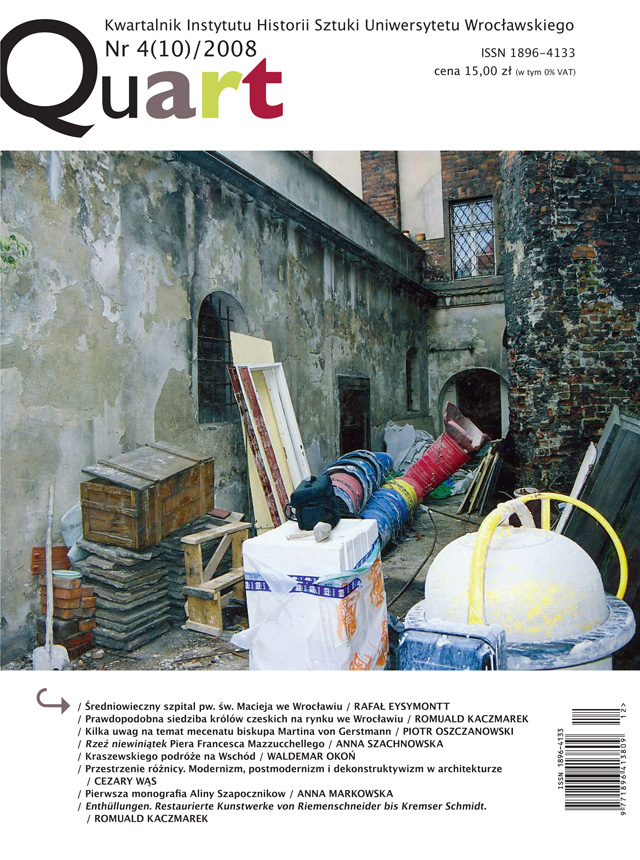„Rzeź niewiniątek” Piera Francesca Mazzucchellego ze zbiorów Museo Diocesano w Mediolanie jako wyraz inspiracji dziełem Guida Reniego
"The Massacre of the Innocents" by Pier Francesco Mazzucchelli from the collection of the Museo Diocesano in Milan as an expression of inspiration by the work of Guido Reni
Author(s): Anna SzachnowskaSubject(s): Fine Arts / Performing Arts, Visual Arts, History of Art
Published by: Wydawnictwo Uniwersytetu Wrocławskiego
Summary/Abstract: The following article is the first publication in Polish, in which one of the most important Lombardian Baroque artists, so far almost completely unknown in Poland, has been introduced in a closer approach. The starting point for analysing his work became the painting of Slaughter of the Innocents (ca. 1616) from the collection of Museo Diocesano in Milan, untypical as far as its composition is concerned, as it has no precedence in Italian art of early Baroque, with distinctive horizontal partitions intermingled with clearly accentuated diagonals. Mazzucchelli applied it also in his other painting of Abduction of Helen (at present in the collection of Colnaghi Gallery in New York) dated at ca. 1613, however the author does not agree with the date and moves it towards ca. 1620. Another painting discussed in the article, being an artistic exercise for the mentioned above works, is Mazzucchelli’s much earlier canvas with Jacob’s Struggle with the Angel (ca. 1610, Museo Diocesano in Milan). In its composition there reappears a horizontal dominant, which organises around it the inner structure of the painting. The author seeks the inspiration for this untypical composition of Slaughter of the Innocents from Milan in Guido Reni’s painting of the same subject (1611, Pinacoteca Nazionale in Bologna), where also appears a strong horizontal accent in the motive of clasping hands. Despite its stylistic differences, the iconographic analogies and applying a similar compositional type may indicate Mazzucchelli’s closer contacts with Bologna milieu.
Journal: Quart
- Issue Year: 10/2008
- Issue No: 4
- Page Range: 61-71
- Page Count: 11
- Language: Polish

